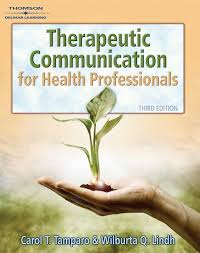Description
Therapeutic Communications For Health Care 3rd Edition By Tamparo -Test Bank
Chapter 7: The Therapeutic Response to Depressed and/or Suicidal Clients
MODIFIED TRUE/FALSE
1.Minor depression is known as dysthymia. _________________________
ANS: T PTS: 1
2.There are three major tests used to diagnosis depression. _________________________
ANS: F, no tests
PTS: 1
3.Men are nearly twice as likely to experience depression as women. _________________________
ANS: F, Women, men
PTS: 1
4.Depression is among the leading cause of disability worldwide. _________________________
ANS: T PTS: 1
5.The elderly are more successful in suicide attempts than are younger people. _________________________
ANS: T PTS: 1
6.Preschoolers are the fastest growing market for antidepressants. _________________________
ANS: T PTS: 1
7.About half of the adults who are depressed believe their depression is a personal weakness and they are too embarrassed to seek help. _________________________
ANS: T PTS: 1
8.Most suicides occur without warning. _________________________
ANS: F, with
PTS: 1
MULTIPLE CHOICE
1.Major depression
|
a. |
indicates persons have just enough energy to do activities of daily living |
|
b. |
is disabling |
|
c. |
often means persons’ thoughts are centered around/related to self-esteem |
|
d. |
often occurs for no apparent reason |
ANS: B PTS: 1
2.What do researchers believe about depression?
|
a. |
After treatment of depression, the brain chemistry returns to normal. |
|
b. |
Treatment of depression rarely requires psychotherapy. |
|
c. |
All depression involves some changes in brain chemistry. |
|
d. |
a and c only |
|
e. |
a, b, and c |
ANS: D PTS: 1
3.According to one of the diagnostic manuals that sets the diagnosis and classes of depression, major depression must have an episode(s) that
|
a. |
causes some impairment in a person’s social or occupational functioning |
|
b. |
represents a change from previous functioning |
|
c. |
lasts at least two weeks |
|
d. |
a, b, and c |
ANS: D PTS: 1
4.Subtypes of major depression include the following type(s).
|
a. |
endogenous |
d. |
a and b only |
|
b. |
postpartum |
e. |
a, b, and c |
|
c. |
suicidal |
||
ANS: D PTS: 1
5.What type of depression leads to anger with temper outbursts, excessive crying, decreased sexual desire, and chronic fatigue?
|
a. |
dysthymic disorder |
c. |
seasonal affective disorder |
|
b. |
involutional depression |
d. |
postpartum depression |
ANS: A PTS: 1
6.Which of the following statements is true about seasonal affective disorder?
|
a. |
SAD occurs more often in men than women. |
|
b. |
The treatment of choice is light therapy or phototherapy. |
|
c. |
SAD is rarely if ever found in children. |
|
d. |
A symptom of SAD is undereating, especially protein. |
ANS: B PTS: 1
7.Which of the following statements is true about postpartum depression (PPD)?
|
a. |
PPD lasts about two years. |
|
b. |
PPD is usually the first time individuals experience depression. |
|
c. |
Stress seems to be one of the contributing factors of PPD. |
|
d. |
Drug therapy is the preferred method of treating PPD. |
ANS: C PTS: 1
8.Suicide statistics include
|
a. |
It is the eighth leading cause of death in the United States. |
|
b. |
Of the percentage that attempt suicide, one third will succeed. |
|
c. |
One half of all male suicides involve firearms. |
|
d. |
Over one half of suicide victims communicate their plan to someone before they follow through with it. |
|
e. |
a, c, and d only |
ANS: E PTS: 1

Reviews
There are no reviews yet.